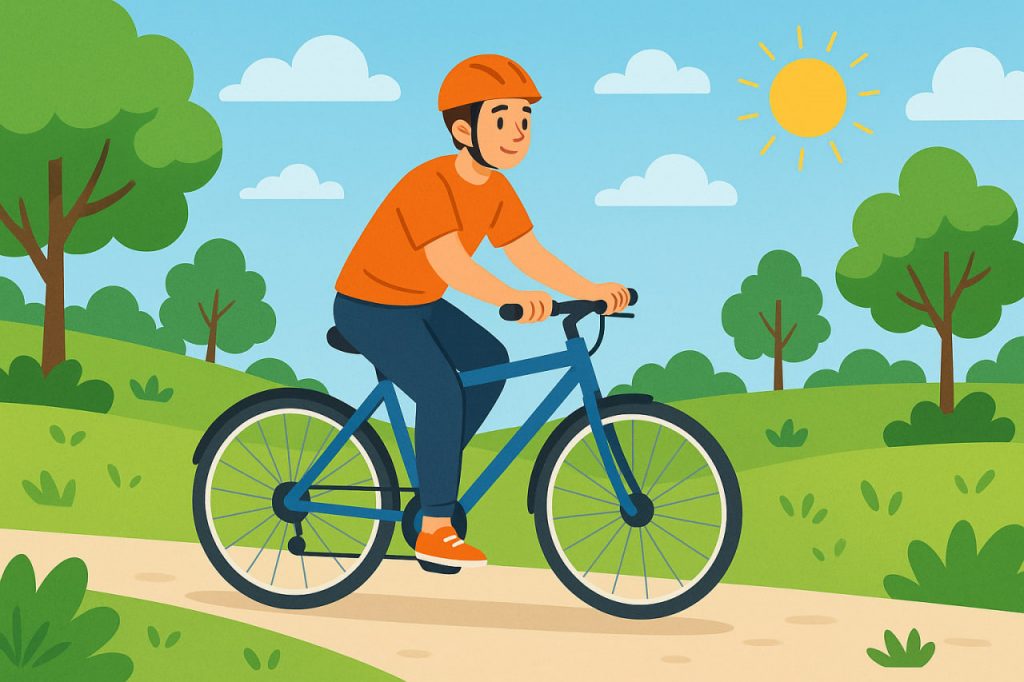The bicycle is one of humanity’s simplest yet most revolutionary inventions. It combines physical activity, environmental friendliness, and convenience in one elegant form. Whether used for commuting, recreation, or sport, cycling has become a lifestyle choice that promotes health and sustainability across the world.
The History of the Bicycle
The first recognizable bicycle appeared in the early 19th century. In 1817, German inventor Karl Drais created the “Laufmaschine,” a wooden two-wheeled vehicle propelled by pushing the feet against the ground. Later, the pedal-powered bicycle emerged in France during the 1860s, followed by the “safety bicycle” — with equal-sized wheels and a chain drive — which became the model for all modern designs.
Throughout the 20th century, bicycles evolved into a global phenomenon. They became essential for workers, students, and athletes, providing affordable, reliable, and eco-friendly transportation.
Health Benefits of Cycling
Riding a bike regularly offers one of the most complete workouts for the body. It strengthens the heart, lungs, and muscles, improves joint mobility, and boosts overall endurance. Cycling also helps reduce stress and anxiety by releasing endorphins, natural hormones that enhance mood.
Doctors often recommend cycling for maintaining a healthy weight, as it burns around 400–700 calories per hour, depending on speed and terrain. Moreover, it is a low-impact exercise, making it gentle on the knees and suitable for people of different ages.
Bicycles and the Environment
Cycling is one of the most sustainable forms of transport. Unlike cars, bicycles produce zero emissions, require minimal resources to manufacture, and reduce noise and traffic congestion. A city with well-developed cycling infrastructure — like Amsterdam or Copenhagen — experiences cleaner air, lower carbon emissions, and healthier residents.
Switching even a few car trips per week to bike rides can significantly reduce one’s carbon footprint and save money on fuel. On a global scale, promoting cycling contributes to the fight against climate change.
Types of Bicycles
Modern bicycles come in a variety of types, each designed for specific uses:
- Road bikes — lightweight and built for speed on pavement.
- Mountain bikes — equipped with suspension and thick tires for rough terrain.
- Hybrid bikes — versatile models for city commuting and leisure.
- Electric bikes (e-bikes) — combine pedaling with electric assistance for longer rides or hills.
- Folding bikes — compact and perfect for urban commuters.
Choosing the right type depends on your lifestyle, fitness level, and where you plan to ride.
Safety and Maintenance
Safety is a crucial part of cycling. Always wear a helmet, use lights and reflective gear when riding at night, and obey traffic rules. Before each ride, check tire pressure, brakes, and chain condition. Regular maintenance ensures a smooth and safe experience, preventing breakdowns on the road.
Cyclists should also be aware of their surroundings — avoid distractions like headphones, signal before turning, and maintain a safe distance from vehicles.
The Social and Mental Aspect of Cycling
Beyond health and ecology, cycling builds community. Group rides, cycling clubs, and charity events unite people who share the same passion. Many find mental clarity and creativity while biking, as rhythmic movement and fresh air help clear the mind and reduce stress.
Interesting Facts
- Over 1 billion bicycles exist worldwide — more than twice the number of cars.
- The fastest recorded speed on a bicycle is 296 km/h, achieved with aerodynamic assistance.
- Cycling just 10 km a day saves around 1,500 kg of CO₂ annually compared to driving.
- The first Tour de France was held in 1903, now one of the world’s most prestigious sports events.
Glossary
- Endorphins — natural chemicals produced by the brain that improve mood and reduce pain.
- Carbon footprint — the total amount of greenhouse gases produced by human activity.
- Suspension — shock-absorbing system in mountain bikes for rough surfaces.
- E-bike — an electric bicycle combining human pedaling with motorized assistance.
- Hybrid bike — a versatile bicycle combining features of road and mountain bikes.

